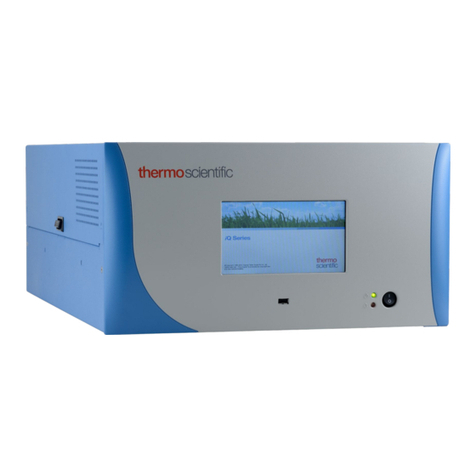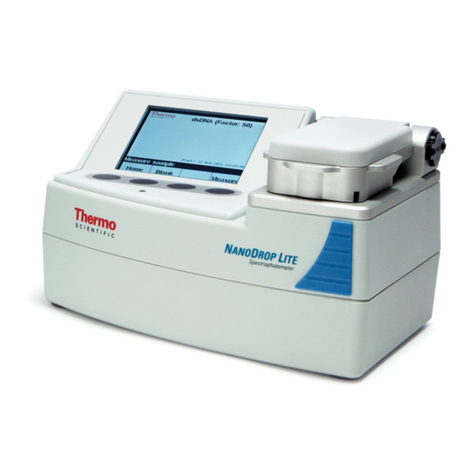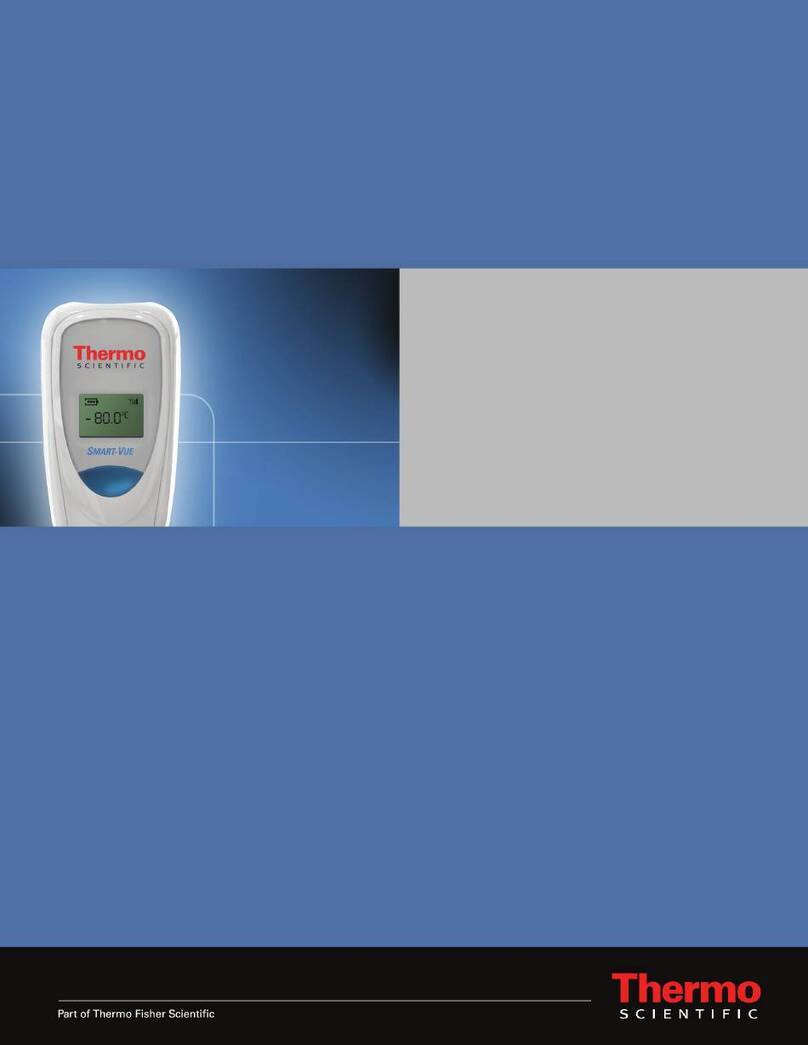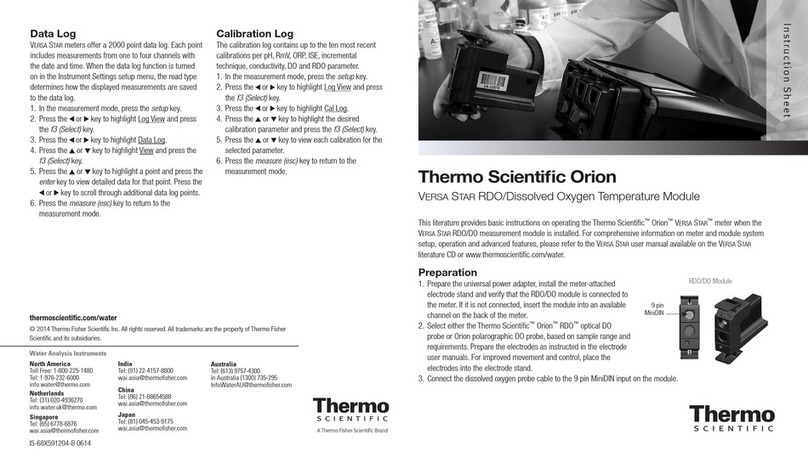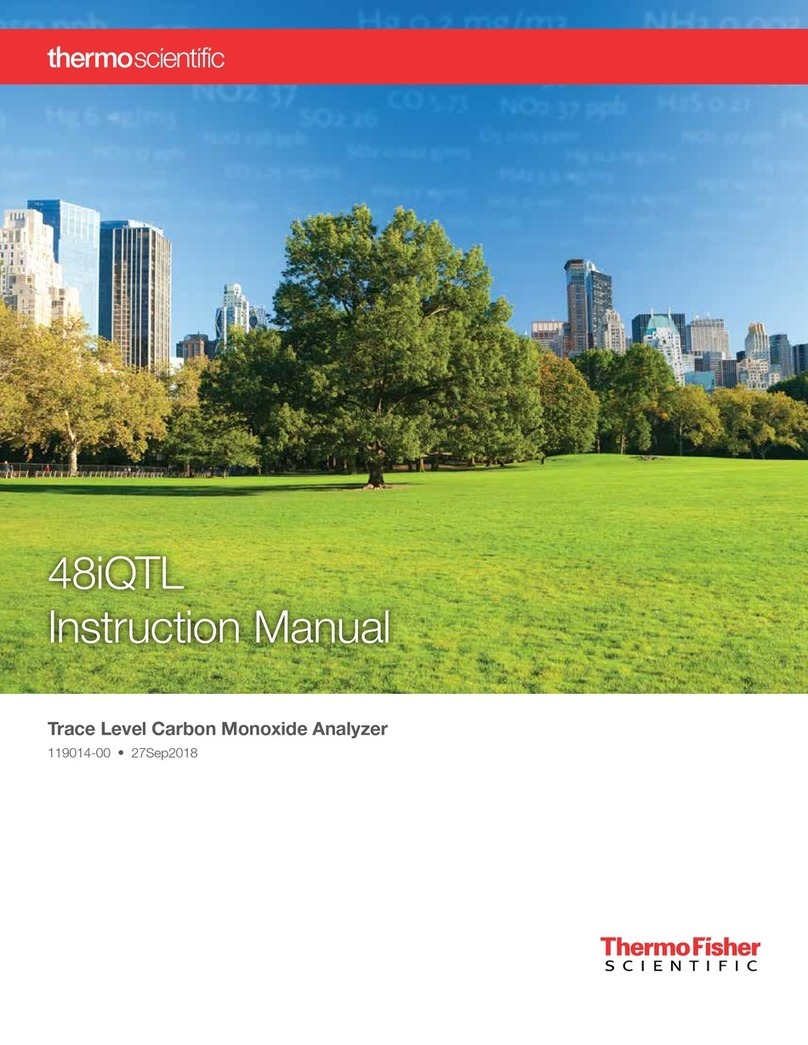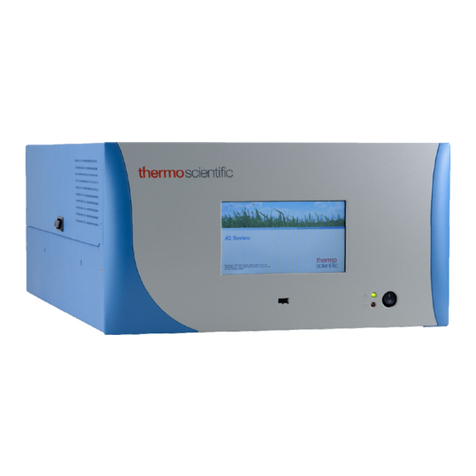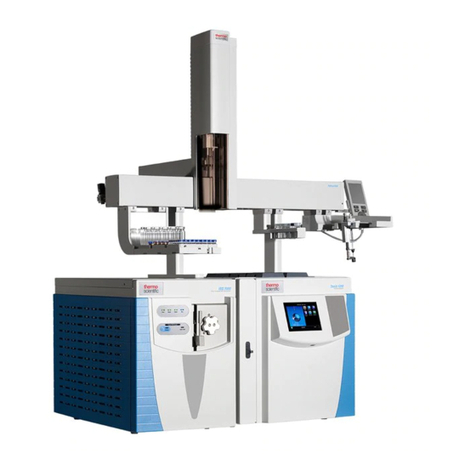Radiation Measurement & Security Instruments
Thermo Fisher Scientific Messtechnik GmbH, 91056 Erlangen, Frauenauracherstr. 96, Germany, Phone +49 9131 998 0 - DK-021E110419 - Fri/Fro - DK-021E.cdr
Short Operation Manual
First Responder Kit
FOR RADEYE B20/B20-ER
1 (2)
The RadEye B20 / B20-ER should be operated at a location with low
radiation background. Measurements mode should be performed at
different locations for the determination of the best spot for the setup.
The RadEye B20 / B20-ER should be operated at a location with low
radiation background. Measurements mode should be performed at
different locations for the determination of the best spot for the setup.
F
1
Set the (t ) of the RadEye B20/B20-ERscaler measurement timeSet the (t ) of the RadEye B20/B20-ERscaler measurement time
Initial Sample Check: Recommended time t [s] = 300Initial Sample Check: Recommended time t [s] = 300
m
3
Impact of measurement time can be seen from the formular at the bottom of this page. Extented measurement times
(sample and background time) improve the detection limit. Please see the below stated simplified formula.
Impact of measurement time can be seen from the formular at the bottom of this page. Extented measurement times
(sample and background time) improve the detection limit. Please see the below stated simplified formula.
m
o
Perform a with the RadEye B20 / B20-ER
inside the sample holder, at least once per day. Leave the planchet or
jar empty and set the RadEye’s background measurement time (t ) to
(recommended) and the total counts to 9999. The derived
background value must be stored (RadEye Display: Save value Yes).
background measurement
1800 s
à
Perform a with the RadEye B20 / B20-ER
inside the sample holder, at least once per day. Leave the planchet or
jar empty and set the RadEye’s background measurement time (t ) to
(recommended) and the total counts to 9999. The derived
background value must be stored (RadEye Display: Save value Yes).
background measurement
1800 s
à
2
Check that the operation mode of the RadEye B20/B20-ER is set to
The net result [cps] will be provided directly by the
RadEye B20/B20-ER if the function is active.
scaler mode.
Scaler netto
Check that the operation mode of the RadEye B20/B20-ER is set to
The net result [cps] will be provided directly by the
RadEye B20/B20-ER if the function is active.
scaler mode.
Scaler netto
4
Simplified formula for the detection limit calculation:Simplified formula for the detection limit calculation:
Detection Limit = 3.3 x x +Detection Limit = 3.3 x x +
m
R
t
R
to
o
oo R = Background Count Rate [cps]
t = Measurement Time [s]
t = Background Measurement Time [s]
R = Background Count Rate [cps]
t= Measurement Time [s]
t = Background Measurement Time [s]
o
m
The formula allows
the determination of
the limit of detection.
Increasing t lowers
the limit of detection.
m
Net result [cps] X=
F[ Bq / cps] Result [Bq]
Perform the sample measurements according to page 2. Verify the actual background radiation level on a regular basis.
Calculate the Bq result by using the below stated formula:
Perform the sample measurements according to page 2. Verify the actual background radiation level on a regular basis.
Calculate the Bq result by using the below stated formula:
5
The calibration factor “F” is typically 5 Bq / cps (approx. 20% Beta efficiency for Cesium and Iodine mixtures).
Practical Hints: : Only beta radiation from top layer of liquid is contributing to the measurement result.
Please see page 2 for a described measurement procedure with related I-131 calibration factor.
Only beta radiation from the top surface facing the detector can be measured. I
the sample around and measure again.
Liquid samples
Solid samples: f appropriate, then turn
The calibration factor “F” is typically 5 Bq / cps (approx. 20% Beta efficiency for Cesium and Iodine mixtures).
Practical Hints: : Only beta radiation from top layer of liquid is contributing to the measurement result.
Please see page 2 for a described measurement procedure with related I-131 calibration factor.
Only beta radiation from the top surface facing the detector can be measured. I
the sample around and measure again.
Liquid samples
Solid samples: f appropriate, then turn


